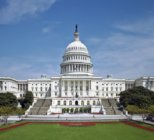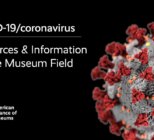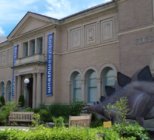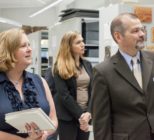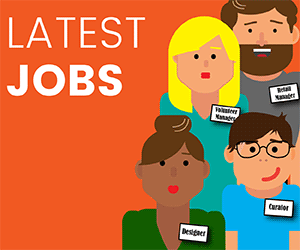Museums are also among the most trusted sources of information in society, and are committed to supporting the lifelong learning of visitors of all ages
Q&A with Ember Farber, Director of Advocacy at AAM
How important is Museums Advocacy Day to the sector?
We think it’s critically important. There are arts, humanities, historic preservation, library and other advocacy days and legislators wouldn’t know the unique value of museums if we don’t also take our message directly to Capitol Hill. It’s not often that museum professionals, museum supporters, independent professionals who work for and with museums and museums of all different types are gathered in one place to meet with legislators’ offices together. It’s also a unique opportunity for museum professionals and supporters to network with peers from across their state and region, get insights directly from federal agency leaders and Congressional staff, and increase their own core advocacy skills. Participants note that the experience isn’t just informative and educational, but empowering and transformational.
How does it benefit the museums sector (can you give a few examples)?
First and foremost, in an environment where legislators and staff are inundated with dozens of issues a day, it’s our job as museum advocates to make sure the work of museums is even on their radar.
Following past Museums Advocacy Days, legislators and staff have asked to visit and tour the museums they represent, have invited the museums who visited them at their DC offices to join local commissions and roundtable discussions on emerging community issues, and followed up directly with the museums that visited them to offer recommendations for federal grant applications or ask them specifically how in-progress legislation might affect the museum. See additional examples here.
What are some of the key challenges and concerns of museum professionals leading up to this year’s Museums Advocacy Day?
Funding is always a challenge – the federal agencies that fund museums’ important educational, historical, artistic, scientific and cultural work regularly report receiving far more high-quality grant applications than they have the funds to reward. Museums are also among the most trusted sources of information in society, and are committed to supporting the lifelong learning of visitors of all ages. Protecting the programmes that support the positive work of museums is always top of mind, especially at a time where there have been repeated proposals to eliminate federal agencies that support museums.
What have been some of the major achievements in the sector over the past year?
Two that come to mind right away are the fiscal year (FY) 2019 Labor-HHS-Education appropriations signed into law in September 2018 that included a $2 million increase for the Institute of Museum and Library Services (IMLS), and the passage of S. 3530, the Museum and Library Services Act of 2018, now Public Law No: 115-410, that reauthorises the Institute of Museum and Library Services for six years.
How has the partial government shutdown impacted the museum and cultural sector?
The damage from the 35-day 2018-2019 partial government shutdown—the longest in US history—is still being assessed. During the 16-day shutdown in October 2013, hundreds of museums nationwide—as well as national parks, forests, monuments, and historic sites—were forced to close their doors, preventing the public from enjoying artworks, historic treasures, and lands that are intended to be held in the public trust. The economic impact of these closures was devastating, not just for the entities themselves, but for many businesses that rely on the tourism they generate.
How does the recent partial government shutdown, and the possibility of future shutdowns, affect the way museums approach this year’s Museums Advocacy Day?
If anything, it adds urgency to an already impassioned cause. Museums have a tremendous story to tell about all the ways they serve their communities, and the importance of federal support for museums to that work. Advocates are especially looking forward to making their voices heard this year with the new Congress.
What will be some of the key aims this year?
To maximise museum professionals’ and supporters’ visibility and efforts in educating and engaging the new Congress, to help ensure that new and returning members of Congress understand the unique value of the museums they represent, to share museums’ economic and educational impact and to make the case for legislative issues that affect museums and the positive impact that federal support of museums has in the communities legislators represent.
How many museum representatives attend each year?
Approximately 300 or more in any given year. Those who participate take their energy and effective advocacy skills back home and often engage colleagues and peers in their communities in continued advocacy – whether that’s planning local meetings with elected officials, using the Alliance’s online advocacy tools to communicate with their legislators, or hosting an event such as the state or district’s Congressional Art Competition or a grant briefing by legislators and grant-making agencies. Other advocates that can’t make it to Washington, DC in person make arrangements to meet with district legislative staff locally, and to share the key legislative information with that staff.
In addition, advocates around the country join the cause on social media following #museumsadvocacy2019 and sharing #MuseumFacts (now updated for 2019!).


